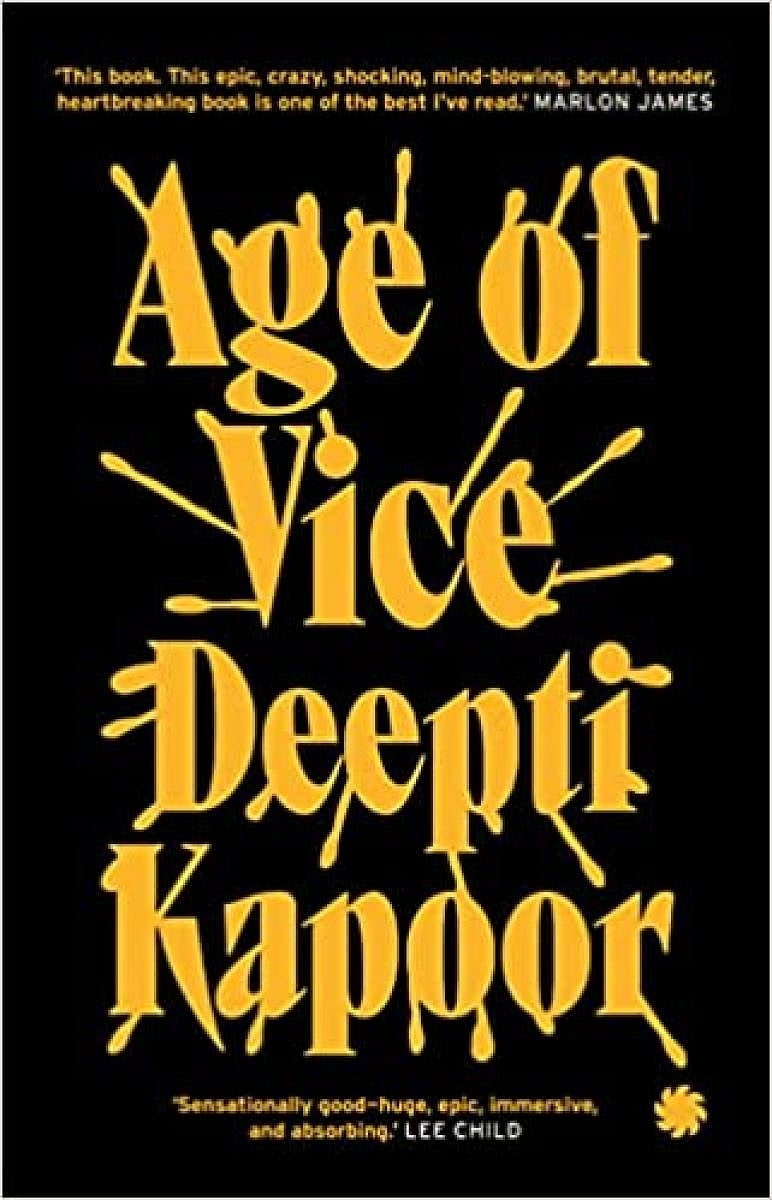
Deepti Kapoor’s 2014 debut novel, A Bad Character, was much lauded by critics and readers alike. Nine years on, she’s back with Age of Vice and it would be no exaggeration whatsoever to say that this book too, is blowing readers away. Adopting an almost austere style in telling the old-old story of crime/power/vice, the author spins a fascinating tale of a mafia family with its roots in Uttar Pradesh.
Age of Vice has us meet Neda Kapur, all of 22 years old but not really wet behind the ears. She’s from one of those old Delhi families where a certain lifestyle, sharp intelligence and shabby chic still reigns, in clear contrast to the loud and brash nouveau city. Neda is a journalist, and one day, she meets the improbably named Sunny Wadia, only son and heir to liquor baron Bunty Wadia, kingmaker and wielder of extraordinary power next door in UP. Wadia Jr is a bon vivant, a connoisseur of the good life. All too soon, Neda is sucked into a whirlpool of bad characters doing bad things.
The story unspools at a rapid clip and Kapoor hews to a spare style that nevertheless, reveals more than it conceals. The characters tower over the story, each one of them literally drenching the printed page with the force of their personalities. We watch a tentative Neda, carefully feeling her way about this strange world, in the process getting severely bruised. We watch Sunny, who carries an arsenal of chips on his shoulders, take on his father and retreat, defeated, each and every time. We watch Ajay whose life follows a fascinating trajectory from a wretched hamlet in eastern UP to a Himachal tourist town to Delhi, where he becomes the trusted general factotum to Sunny Wadia. We watch the deadly Bunty Wadia play all sorts of power games and move from liquor to sand mining to transport, to control of the police and the judiciary with facile ease; we watch Bunty’s sinister gangster brother Vicky go about strengthening his Himmatgiri image, and we watch Dinesh Singh, the smart young son of the UP chief minister, hover unobtrusively on the margins while stealthily getting his act together.
Kapoor breathes so much life into these people that they remain with the reader well after the story is told. While the larger focus is on the games people play, what stands out is the way those games impact the players, the devastation they wreak, how picking up the pieces and going on becomes that much harder to do, and how illusory the sensation of strength often can be.
From the central whorl of this poisoned flower, the reader moves to the whorl of politics as played/performed both in the capital city of the country, as well as neighbouring UP. The other whorls are the lives lived in the lower reaches of the Himalayas, in eastern UP, in Lucknow, in Goa, and then in faraway England. Violence is the one constant leitmotif in the story. It all starts with a horrific accident where a speeding Mercedes mows down labourers sleeping on a Delhi pavement. It is a world that unfolds every day around us here in India, a world of iniquities that most of us have given up analysing, instead settling for a dull acceptance. There is cruelty, drugs, sex, and liquor, there are the dissolute rich and the abject poor, but in this story, nothing seems jaded.